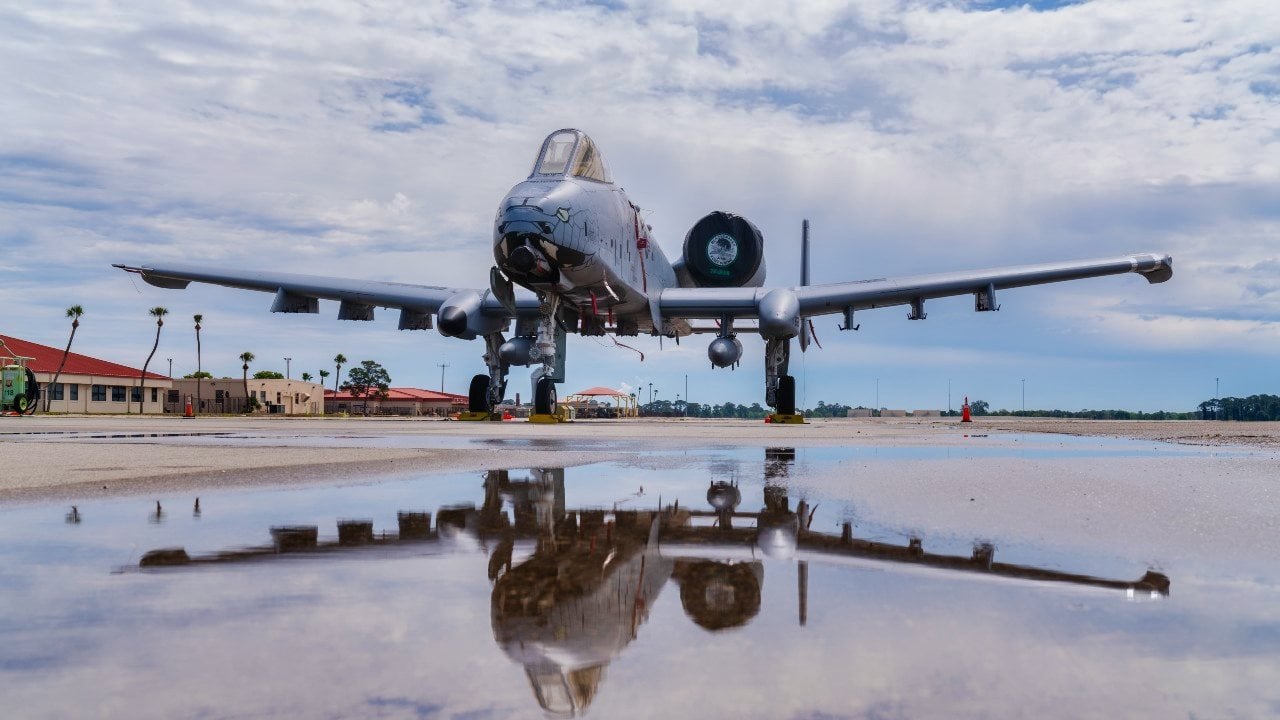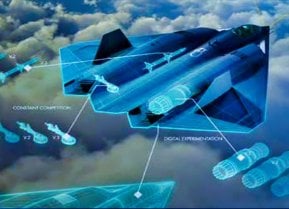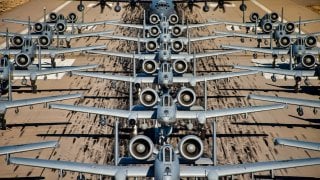No, the A-10 Warthog Can't Fly from an Aircraft Carrier
The idea of converting the A-10 Warthog into a carrier-based aircraft is appealing but impractical due to significant engineering challenges.
Summary and Key Points: The idea of converting the A-10 Warthog into a carrier-based aircraft is appealing but impractical due to significant engineering challenges.

-The A-10, designed for close air support with heavy armor and a large Gatling gun, would require extensive modifications, including a reinforced undercarriage, specialized landing gear, arrestor wires, and folding wings, to operate from an aircraft carrier.
-These changes would compromise its combat effectiveness, making it a less viable option for naval operations. Ultimately, the concept of a carrier-based A-10 must be discarded due to the extensive alterations needed and the resulting loss of its key features.
Why the A-10 Warthog Can't Become a Carrier-Based Aircraft
No, the A-10 Cannot Become a Carrier-Based Platform - The A-10 Warthog is one of America’s most enduring and controversial warplanes. This U.S. Air Force plane was designed for Close Air Support (CAS) missions. The Pentagon has wanted to cancel this iconic program for years.
The Air Force has argued that in the age of long-range weapons, drones, and fifth-generation warplanes, other systems can take on CAS missions better than the A-10. Years of successful A-10 missions in Iraq and Afghanistan, of course, argue otherwise.
Pentagon planners, thus far stymied in their drive to delete the A-10, have looked for other mission sets that the aging A-10 can perform. One of the suggestions is to land these warbirds on U.S. Navy aircraft carriers.
The idea might not be as absurd as it sounds. The Navy released incredible photos of a squadron of Air Force A-10 Warthogs flying above USS Nebraska, an Ohio-class ballistic missile submarine, as it transited the Salish Sea. According to Oliver Parken of The War Zone, the A-10s have become “common force protection and support platforms for the strategic missile boats as they come and go from their home ports.”
The A-10 is limited by its fuel range. These birds can’t fly with the submarines indefinitely, unfortunately. And, even though they can receive midair refueling, it would be a waste of resources to have them make prolonged journeys from the United States across the vast oceans of the world, providing air support for the Navy.
So as the subs move farther away from the mainland, the A-10s have to pull back. But threats are increasing to America’s submarine force, as well as to its aircraft carriers and the rest of the fleet. With the possibility of a great power war facing the United States, it might be necessary to upgrade the A-10 to land and take off from American aircraft carriers.
Proponents of this gonzo idea point to the fact that the A-10 is meant to take off and land on shorter runways. They argue that the A-10 would be a perfect fit, therefore, for carrier flight operations. Just a tweak of the design here and a modification to the A-10 there, and it could be carrier-based in no time.
Such fantasies overlook the profound engineering complications.
Understanding the Complications
The A-10 Warthogs are very strong warplanes, but they are not rated for carrier landings. People unfamiliar with the complexity and difficulty of carrier flight operations might just assume that any warbird can land. It is not so.
At the very least, the entire undercarriage of the A-10 would have to be redesigned and rebuilt to better withstand the trapping process that occurs when a plane lands on the flight deck of an aircraft carrier.
A plane does not really land on a carrier. More accurately, the pilot of a bird landing on an aircraft carrier is taking his speeding plane and crashing it into a giant net, going from hundreds of miles per hour to zero in 30 seconds. (Before anyone sends me angry emails, I understand that I am grossly oversimplifying how an aircraft lands on a carrier flightdeck.)
In its current configuration, the A-10 is a heavily armored flying beast designed to hover for protracted periods of time over a contested battlespace, providing air cover for U.S. and allied ground forces. Reconfiguring the undercarriage of the Warthog for carrier landings would likely entail removing some of the armor that makes this bird so magnificent.
Then there is the added complication of the landing gear, which would need to be reinforced for slamming at a fast speed into the carrier flight deck. Navy planes have specialized landing gear that can take the pounding. But birds designed for the Air Force that take off and land on the ground do not have these abilities.
What’s more, the A-10 has a front landing gear configuration that is offset to allow for its larger Gatling gun – the key offensive feature of this plane – to operate in the front of the plane. Changing the landing gear configuration likely removes the essence of the Warthog.
The A-10 would also need an arrestor wire to catch the “trap” on the carrier as the Warthog lands. (This is how aircraft are brought to an almost instantaneous standstill when landing on a carrier flightdeck.)
Oh, and the A-10 is far too wide for normal carrier operations. So the Navy would need to redesign the A-10 to have folding wings.
The entire process would be time consuming and expensive. The alterations made to the warbird’s overall design to better comport with carrier operations would make this bird a weaker vehicle from a combat perspective.
A-10 from Carriers Is Not Worth It
The possibility that the heavy armor and the Gatling gun would have to be removed to allow for safer landings negates whatever advantages the A-10 might conceivably grant a carrier’s airwing.

It's a great idea on paper. Until one gets into the engineering fundamentals and sees that, in order to make the A-10 compatible with carrier operations, one essentially loses the A-10. Being lighter, lacking firepower, means that this bird would be a waste.
This is one concept that must be thrown out as soon as possible.
Author Experience and Expertise: Brandon J. Weichert
Brandon J. Weichert, a National Interest national security analyst, is a former Congressional staffer and geopolitical analyst who is a contributor at The Washington Times, the Asia Times, and The-Pipeline. He is the author of Winning Space: How America Remains a Superpower, Biohacked: China’s Race to Control Life, and The Shadow War: Iran’s Quest for Supremacy. His next book, A Disaster of Our Own Making: How the West Lost Ukraine, is due October 22 from Encounter Books. Weichert can be followed via Twitter @WeTheBrandon.
All images are Creative Commons or Shutterstock.
From the Vault
Russia Freaked Out: Why the U.S. Navy 'Unretired' the Iowa-Class Battleships
Battleship vs. Battlecruiser: Iowa-Class vs. Russia's Kirov-Class (Who Wins?)


